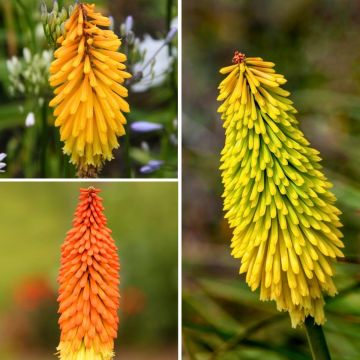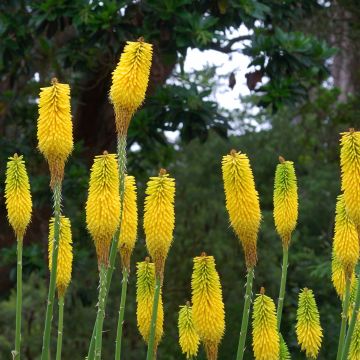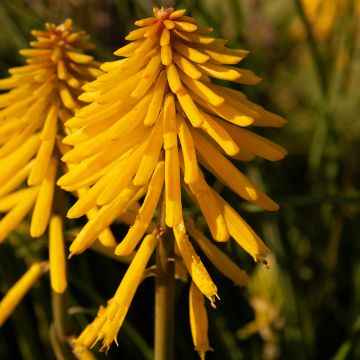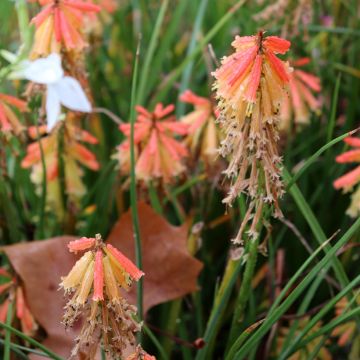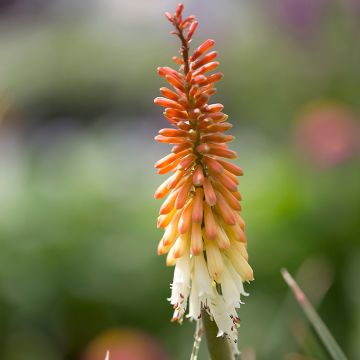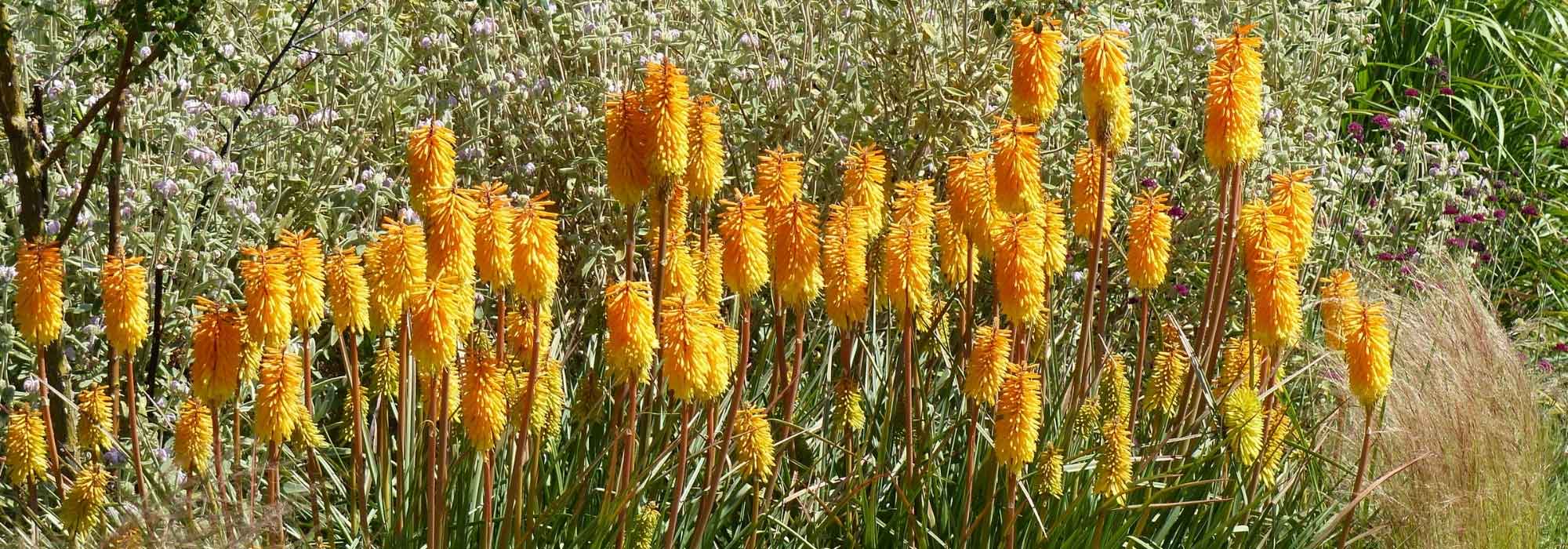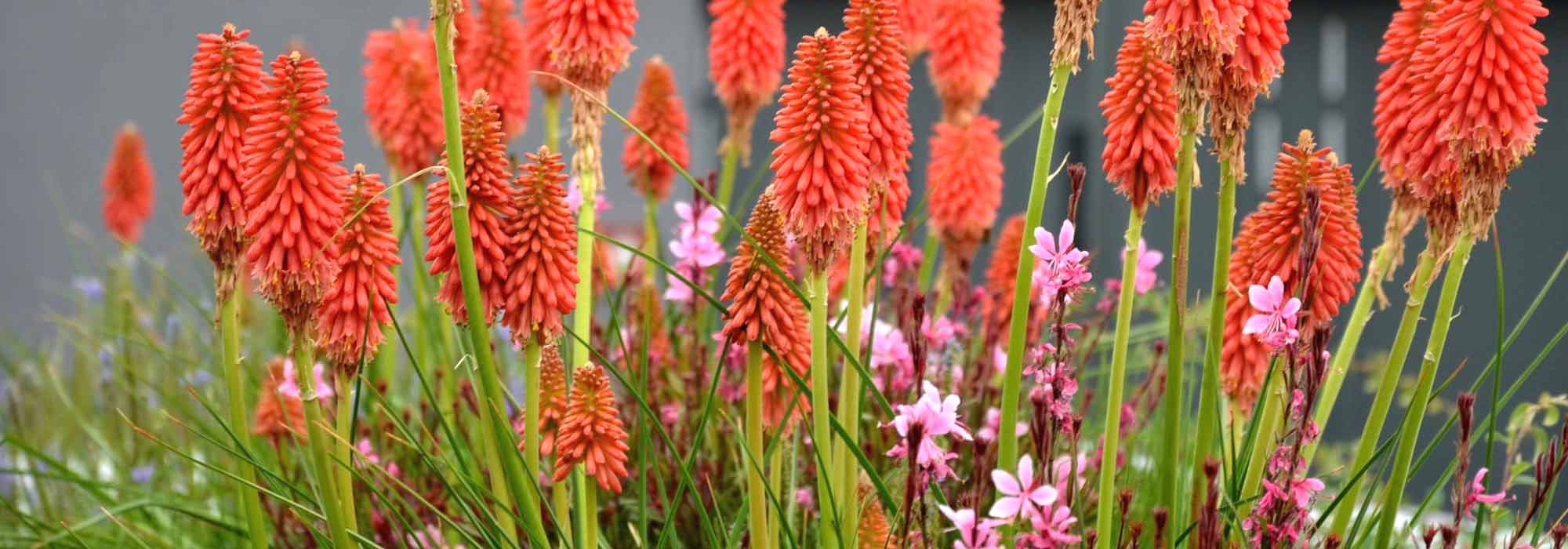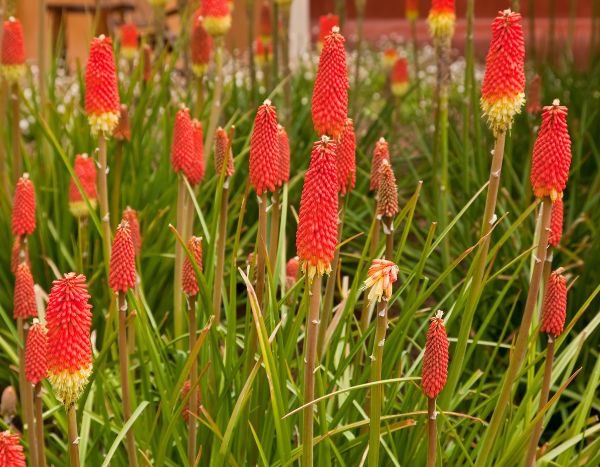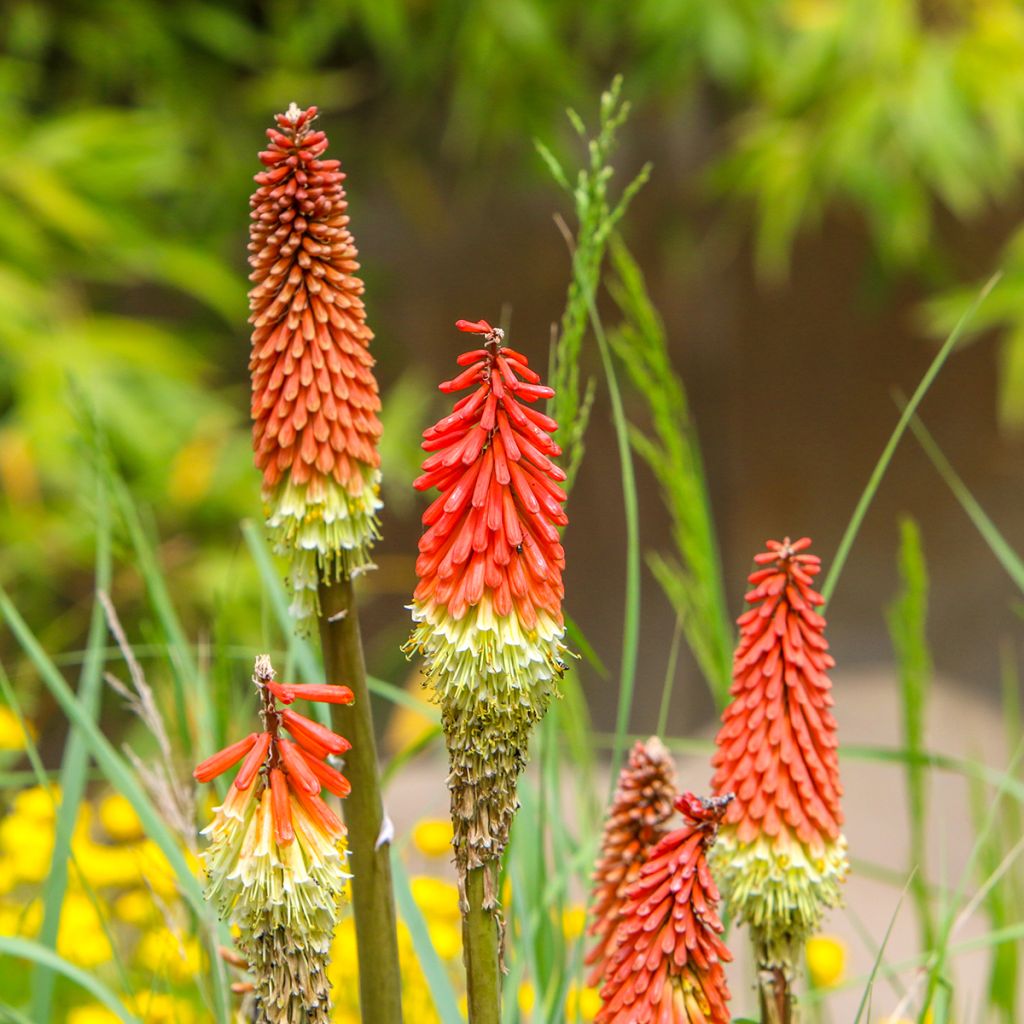

Kniphofia uvaria - Red Hot Poker
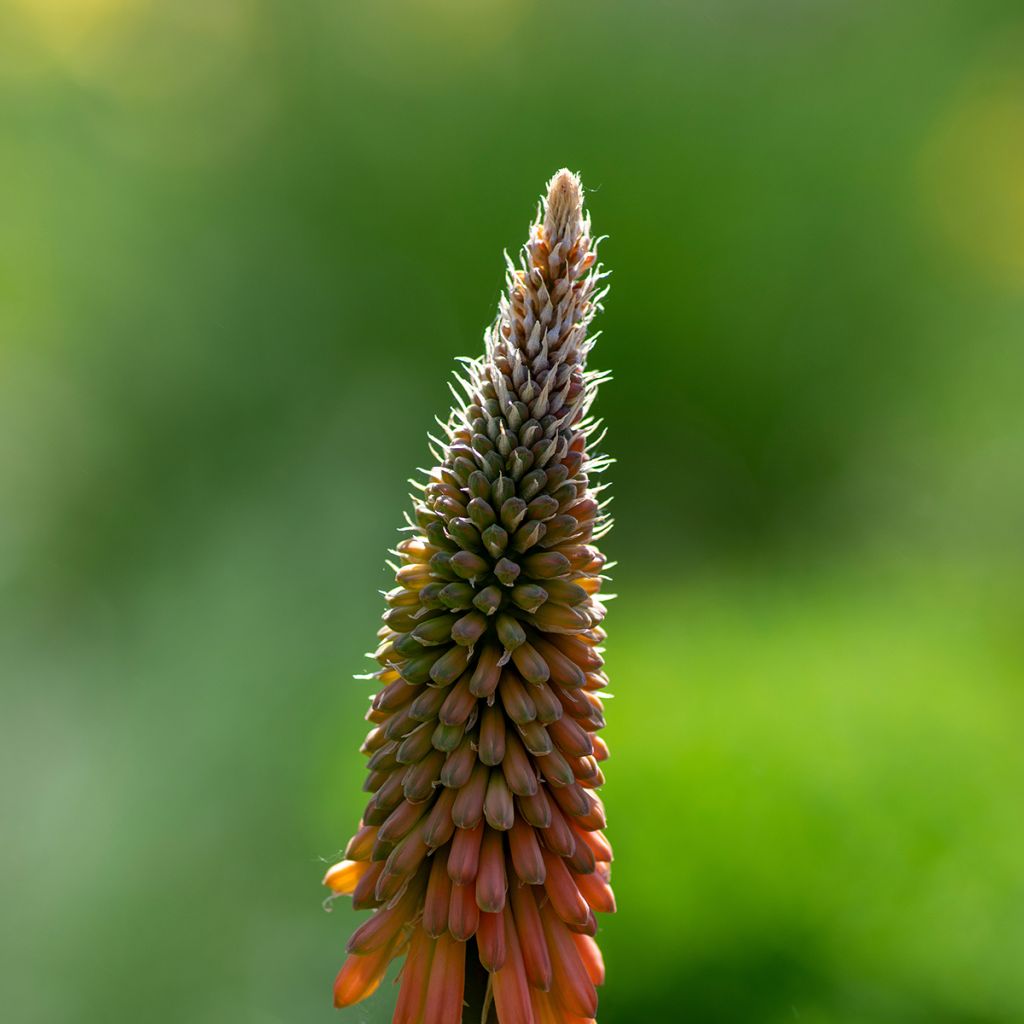

Kniphofia uvaria - Red Hot Poker
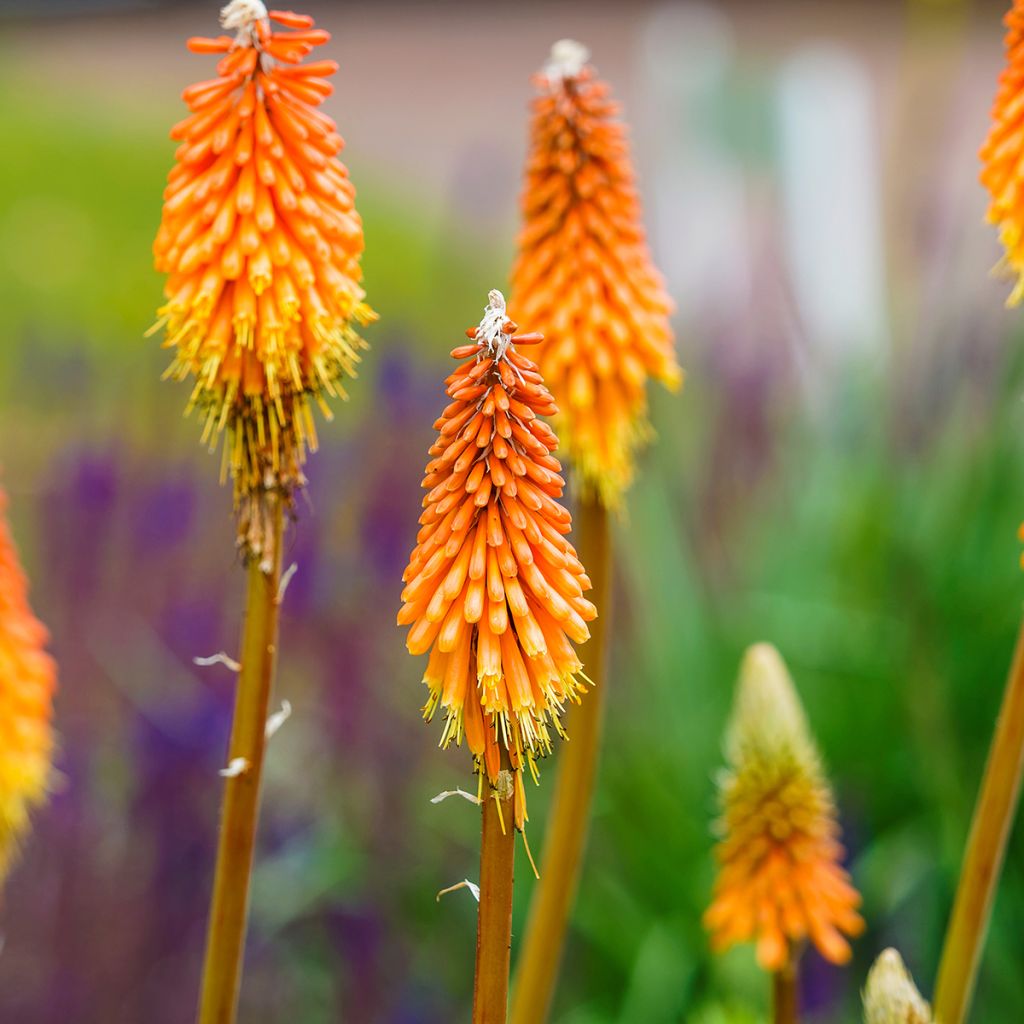

Kniphofia uvaria - Red Hot Poker
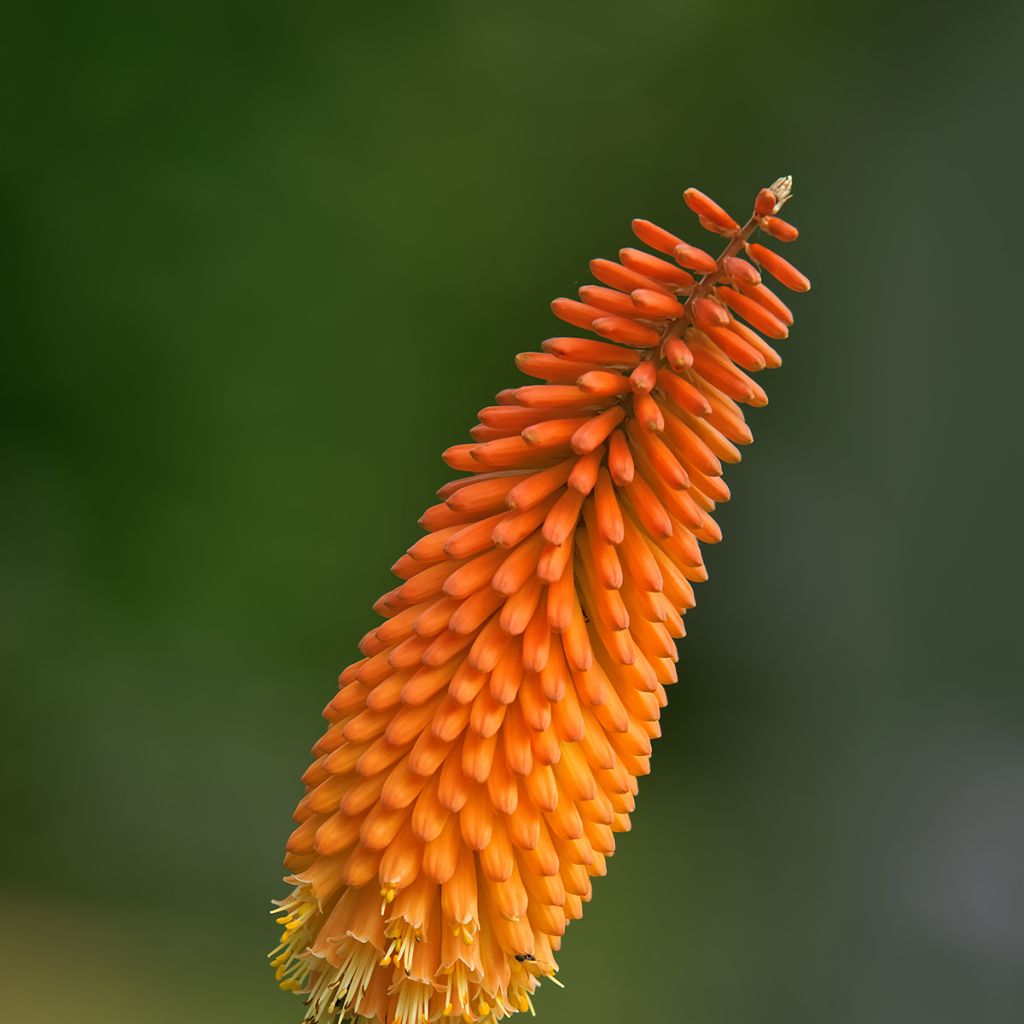

Kniphofia uvaria - Red Hot Poker
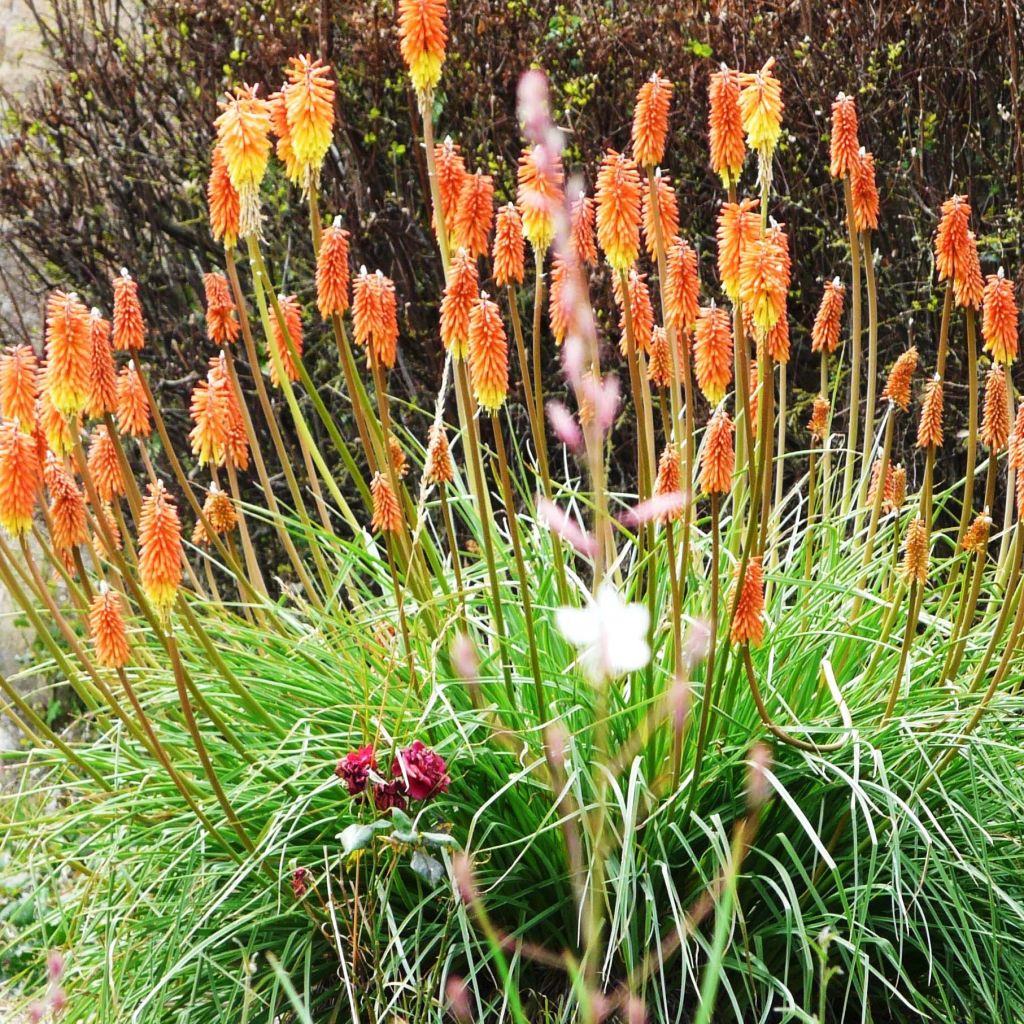

Kniphofia uvaria - Red Hot Poker
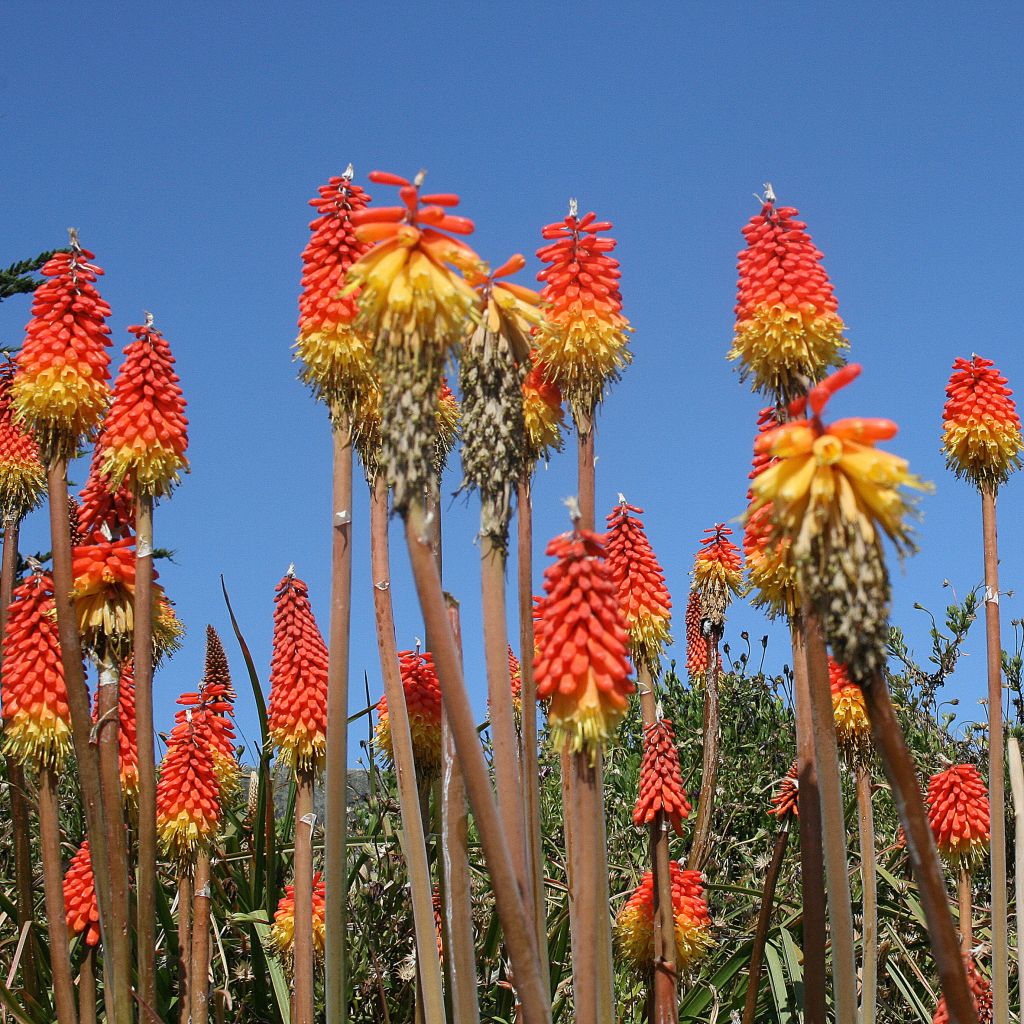

Kniphofia uvaria - Red Hot Poker
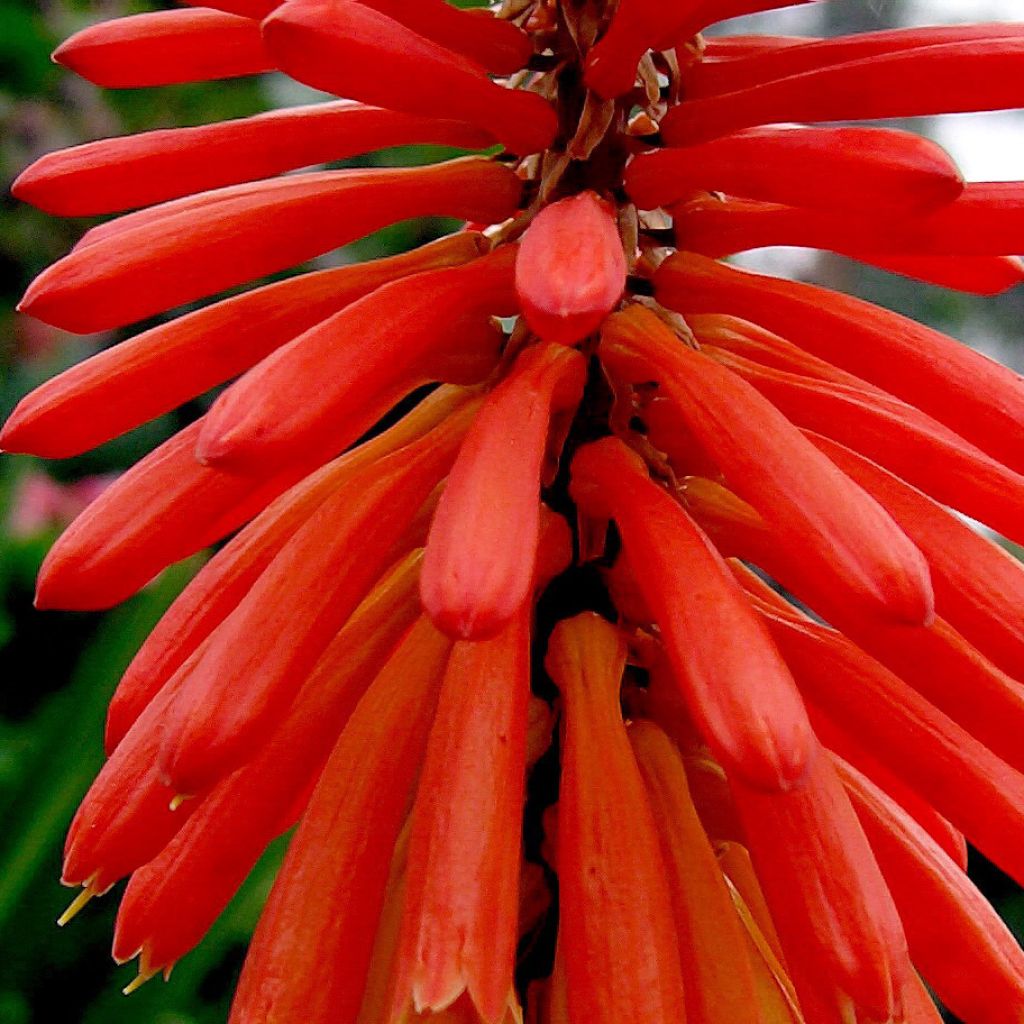

Kniphofia uvaria - Red Hot Poker
Kniphofia uvaria - Red Hot Poker
Kniphofia uvaria
Red Hot Poker, Tritoma, Torch Lily, Poker Plant
Order received on time, remember to put a cover on the plant pot, soil running in the package. Planting and waiting for the flowering eagerly.
HENRI, 17/10/2024
Special offer!
Receive a €20 voucher for any order over €90 (excluding delivery costs, credit notes, and plastic-free options)!
1- Add your favorite plants to your cart.
2- Once you have reached €90, confirm your order (you can even choose the delivery date!).
3- As soon as your order is shipped, you will receive an email containing your voucher code, valid for 3 months (90 days).
Your voucher is unique and can only be used once, for any order with a minimum value of €20, excluding delivery costs.
Can be combined with other current offers, non-divisible and non-refundable.
Home or relay delivery (depending on size and destination)
Schedule delivery date,
and select date in basket
This plant carries a 12 months recovery warranty
More information
We guarantee the quality of our plants for a full growing cycle, and will replace at our expense any plant that fails to recover under normal climatic and planting conditions.

Would this plant suit my garden?
Set up your Plantfit profile →
Description
Kniphofia uvaria, also known as red-hot poker, is an excellent plant for borders and a classic choice for sunny banks. It boasts a long flowering period in a beautiful gradient of scarlet-red and orange-yellow. It forms a lush clump of glossy, channelled leaves that remain attractive throughout the season. From spring to the end of summer, it displays dense spike-like inflorescences of small pendulous flowers, attracting butterflies and bees. It is a robust and cheerful perennial, very hardy and drought-resistant. Plant it in full sun in well-drained soil.
Kniphofia uvaria belongs to the Asphodelaceae family. This fleshy rhizome perennial plant is native to South and East Africa, but it withstands our cold and humid winters very well. It forms a slightly tousled upright clump, with tough ribbon-like leaves and parallel veins, reaching 1m (3ft) in height when flowering and 50cm (20in) in width. The flowering period is particularly long, from June to September, rising well above the foliage on bare stems. The inflorescence resembles a torch, and it is both nectar-rich and honey-producing. It is a dense terminal cluster of tubular and pendulous flowers, starting with a scarlet-red colour and gradually evolving towards orange, creating a gradient from top to bottom of the spike. The foliage is deciduous, composed of very long, slightly sharp, vibrant green and glossy leaves, grouped in a spreading bunch. Its ability to self-seed spontaneously is incomparable.
Their exotic appearance already charmed our grandmothers. Tritomas are surprising plants, yet very sturdy. They light up any garden with their colourful torches. Kniphofia uvaria integrates well into a large rock garden, paired with magenta red hollyhocks, common sage, purple toadflax, and the deep blue flowers of Anchusa azurea 'Loddon Royalist'. Tritomas complement lightly flowering perennials. They can also be planted as solitary specimens on a lawn, along a pathway, mixing different colours, or combined with bamboo, yuccas, cannas, and lobelias to create an exotic atmosphere.
Kniphofia uvaria - Red Hot Poker in pictures
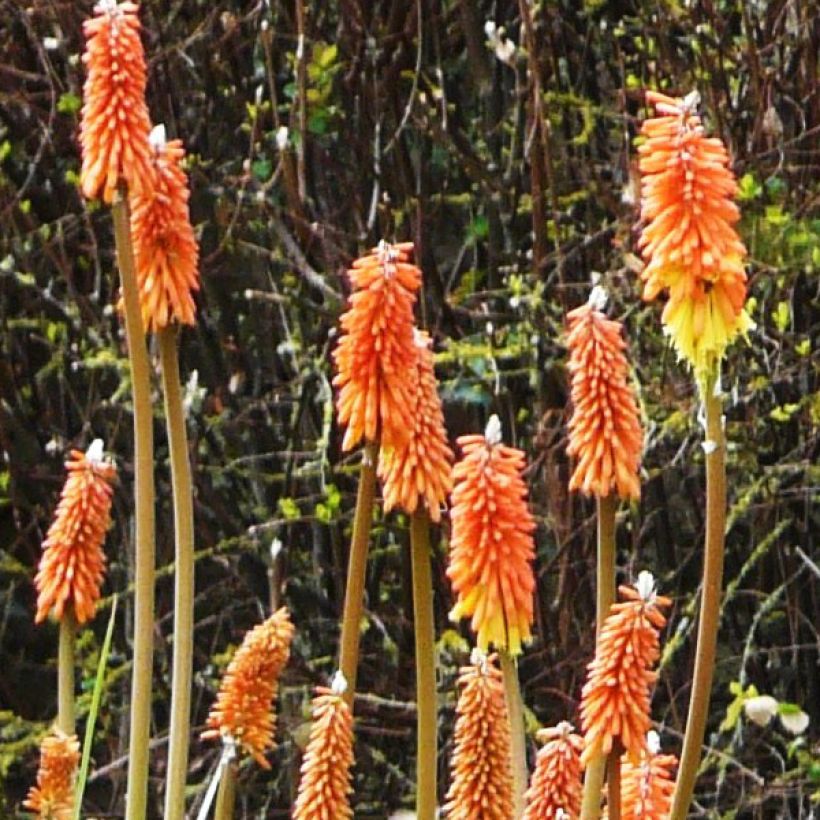

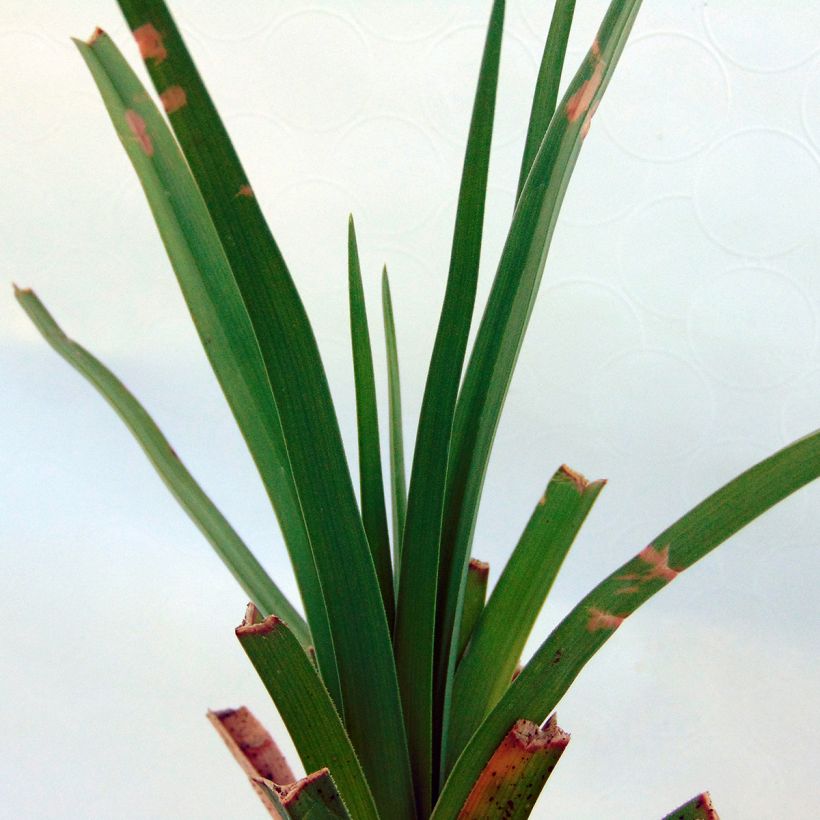

Flowering
Foliage
Plant habit
Botanical data
Kniphofia
uvaria
Asphodelaceae
Red Hot Poker, Tritoma, Torch Lily, Poker Plant
South Africa
Other Kniphofia - Red-Hot Pokers
View all →Planting and care
Kniphofia uvaria is not afraid of clay soils or the foggy winters of our regions, and it self-seeds everywhere. Its hardiness can withstand any conditions.
Plant in any ordinary, well-drained, loose soil in full sun. It particularly thrives in slightly loamy soils and dislikes waterlogged soils in winter. Make sure it doesn't lack water in summer, as this is when it needs it the most. A thick mulch can be applied around the stump to protect it during particularly cold winters. This plant tolerates wind and the specific conditions of coastal areas. Apply organic fertiliser at the start of the growing season. Remove faded stems and flowers at the end of autumn. This plant requires no further care.
Planting period
Intended location
Care
Planting & care advice
-
, onOrder confirmed
Reply from on Promesse de fleurs
Haven't found what you were looking for?
Hardiness is the lowest winter temperature a plant can endure without suffering serious damage or even dying. However, hardiness is affected by location (a sheltered area, such as a patio), protection (winter cover) and soil type (hardiness is improved by well-drained soil).

Photo Sharing Terms & Conditions
In order to encourage gardeners to interact and share their experiences, Promesse de fleurs offers various media enabling content to be uploaded onto its Site - in particular via the ‘Photo sharing’ module.
The User agrees to refrain from:
- Posting any content that is illegal, prejudicial, insulting, racist, inciteful to hatred, revisionist, contrary to public decency, that infringes on privacy or on the privacy rights of third parties, in particular the publicity rights of persons and goods, intellectual property rights, or the right to privacy.
- Submitting content on behalf of a third party;
- Impersonate the identity of a third party and/or publish any personal information about a third party;
In general, the User undertakes to refrain from any unethical behaviour.
All Content (in particular text, comments, files, images, photos, videos, creative works, etc.), which may be subject to property or intellectual property rights, image or other private rights, shall remain the property of the User, subject to the limited rights granted by the terms of the licence granted by Promesse de fleurs as stated below. Users are at liberty to publish or not to publish such Content on the Site, notably via the ‘Photo Sharing’ facility, and accept that this Content shall be made public and freely accessible, notably on the Internet.
Users further acknowledge, undertake to have ,and guarantee that they hold all necessary rights and permissions to publish such material on the Site, in particular with regard to the legislation in force pertaining to any privacy, property, intellectual property, image, or contractual rights, or rights of any other nature. By publishing such Content on the Site, Users acknowledge accepting full liability as publishers of the Content within the meaning of the law, and grant Promesse de fleurs, free of charge, an inclusive, worldwide licence for the said Content for the entire duration of its publication, including all reproduction, representation, up/downloading, displaying, performing, transmission, and storage rights.
Users also grant permission for their name to be linked to the Content and accept that this link may not always be made available.
By engaging in posting material, Users consent to their Content becoming automatically accessible on the Internet, in particular on other sites and/or blogs and/or web pages of the Promesse de fleurs site, including in particular social pages and the Promesse de fleurs catalogue.
Users may secure the removal of entrusted content free of charge by issuing a simple request via our contact form.
The flowering period indicated on our website applies to countries and regions located in USDA zone 8 (France, the United Kingdom, Ireland, the Netherlands, etc.)
It will vary according to where you live:
- In zones 9 to 10 (Italy, Spain, Greece, etc.), flowering will occur about 2 to 4 weeks earlier.
- In zones 6 to 7 (Germany, Poland, Slovenia, and lower mountainous regions), flowering will be delayed by 2 to 3 weeks.
- In zone 5 (Central Europe, Scandinavia), blooming will be delayed by 3 to 5 weeks.
In temperate climates, pruning of spring-flowering shrubs (forsythia, spireas, etc.) should be done just after flowering.
Pruning of summer-flowering shrubs (Indian Lilac, Perovskia, etc.) can be done in winter or spring.
In cold regions as well as with frost-sensitive plants, avoid pruning too early when severe frosts may still occur.
The planting period indicated on our website applies to countries and regions located in USDA zone 8 (France, United Kingdom, Ireland, Netherlands).
It will vary according to where you live:
- In Mediterranean zones (Marseille, Madrid, Milan, etc.), autumn and winter are the best planting periods.
- In continental zones (Strasbourg, Munich, Vienna, etc.), delay planting by 2 to 3 weeks in spring and bring it forward by 2 to 4 weeks in autumn.
- In mountainous regions (the Alps, Pyrenees, Carpathians, etc.), it is best to plant in late spring (May-June) or late summer (August-September).
The harvesting period indicated on our website applies to countries and regions in USDA zone 8 (France, England, Ireland, the Netherlands).
In colder areas (Scandinavia, Poland, Austria...) fruit and vegetable harvests are likely to be delayed by 3-4 weeks.
In warmer areas (Italy, Spain, Greece, etc.), harvesting will probably take place earlier, depending on weather conditions.
The sowing periods indicated on our website apply to countries and regions within USDA Zone 8 (France, UK, Ireland, Netherlands).
In colder areas (Scandinavia, Poland, Austria...), delay any outdoor sowing by 3-4 weeks, or sow under glass.
In warmer climes (Italy, Spain, Greece, etc.), bring outdoor sowing forward by a few weeks.































